The search for ideal sow feed continues
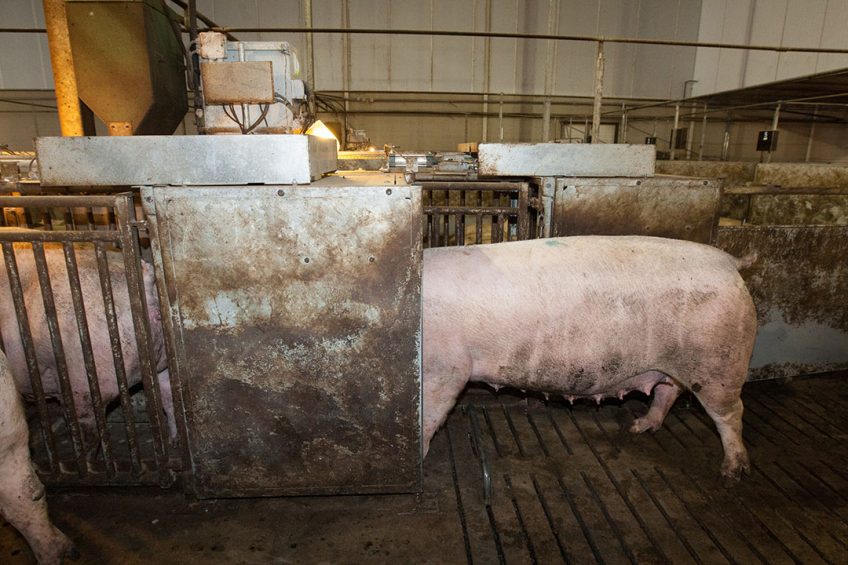
How much can diet composition and timing mitigate the negative effects of the larger litter sizes now common across the swine industry? Research at Kansas State University, USA, showed some new results.
“As producers continue to increase the number of piglets born in a litter, it is necessary to review problems that can arise in larger litters, and whether these issues can be effectively managed.” These problems, as noted in a recent paper published by scientists at the University of Adelaide and Sunpork Group in Australia, includes lower birth weights, more stillbirths and lower survival rates to weaning.
Examining better feeding strategies for gestating sows
At Kansas State University (KSU), United States, swine nutritionists have been examining better strategies for feeding pregnant sows, work that they say could impact survivability and productivity in all phases of swine production. However, these strategies cannot negatively impact sow performance nor add unnecessary costs.
Whilst KSU swine nutritionist Jason Woodworth noted in a recent article on the KSU website that no specific diet formulation change yet to be found “is the magic bullet to resolving the challenges faced by the sow prior to giving birth,” he asserted that “how we feed the sow is important. Increasing the frequency of meals has shown the greatest benefit. Instead of feeding one meal per day, which is common, feeding sows 2-4 meals results in better performance.”
Sow nutrition studies already completed
Woodworth and his team have already conducted a couple of large studies with commercial swine partners and have another underway. The finished studies have focused on nutrition in the 10 days before farrowing.
Nutrition at that point in a sow’s or gilt’s life is all about meeting the changing requirements of the animal as birth approaches, but also successful lactation and the production high quality/quantity of colostrum. In a presentation on November 18 about these studies, Woodward explained that examination of nutrition in this context has been something the dairy industry has done for decades.
Increased levels of energy and protein for sows and gilts
While feed additives (such as fibre, HMB, fatty acids, CLA and phytase) have been the subject of other studies, recent trials at KSU involve providing increased levels of energy and protein (lysine) to sows and gilts (essentially feeding a lactation diet before lactation), along with meal size/timing.
In one trial, groups of sows and gilts were given 13.3 Mcal metabolisable energy and 40g standardised ileal digestible (SID) lysine per day, double what the control sows and gilts received. Body weight and back fat gains were higher in the treatment groups. Stillborn rates were also lower in treatment groups compared to pigs in the control group, but no differences were found in litter size, colostrum yield, number of piglets born alive or in the rate of survival of piglets in the first 24 hours after birth.
The weights of born-alive piglets were higher in the treatment gilt group but not the treatment sow group; piglets with higher birth weights are much more likely to survive until weaning, so this is an important area to focus on.

More on swine nutrition: Canola meal in pig diets
Meal size and duration
Another KSU study involved changes to sow diets, starting at day 113 of gestation (entry into farrowing house). In total 3 treatments were given:
- 6 lbs of feed (2.7 kg) once a day;
- Small meals (1.5 lbs or 0.7 kg) 4 times a day; and
- ad lib access to feed.
The stillborn rate was the same across the treatments, as was daily feed intake during lactation. The group of sows allowed ab lib access to feed had the most need for farrowing assistance. Sows that received the treatment of small meals had the highest born-alive piglet birth weights and the highest rate of piglet survival to wean, but piglets of ad lib sows had the highest average weight at weaning.
Study by AMVC Nutritional Services
A somewhat similar study was recently completed by AMVC Nutritional Services where sows were fed 1 meal of 1.8 kg versus 2 smaller meals of 0.9 kg versus 2 larger meals of 2.7 kg. The lowest percentage of stillborn piglets was found with the sow group fed two smaller meals.
Woodward noted in his November 18 presentation that when the company then instituted a feeding regimen of 2 meals a day versus the previously-provided 1 meal regimen across the operation, a significant system-wide decrease in stillborns resulted. “I think this does a very nice job illustrating the application of the research trial,” said Woodward.
Little overall benefit from feeding increased energy
Overall, the KSU research so far has pointed to little overall benefit from feeding increased energy, lysine or a lactation diet fed prior to farrowing, but that more potential for benefit exists with gilts over sows.
And whilst increasing meal frequency prior to parturition could improve pre-wean livability, said Woodward, care is needed not to overcondition sows.
Join 18,000+ subscribers
Subscribe to our newsletter to stay updated about all the need-to-know content in the pigsector, three times a week. Beheer
Beheer


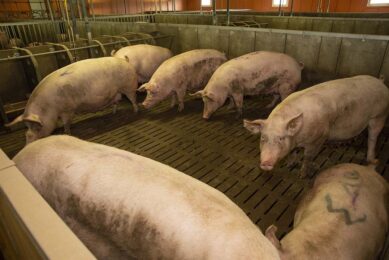
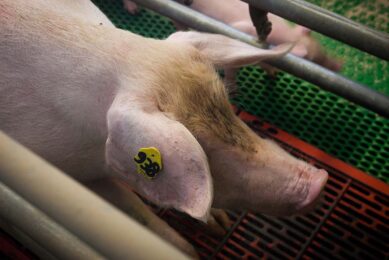
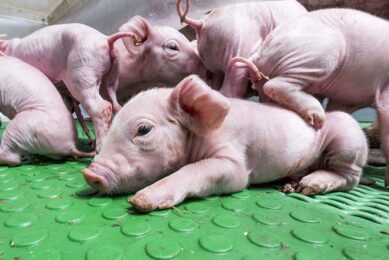
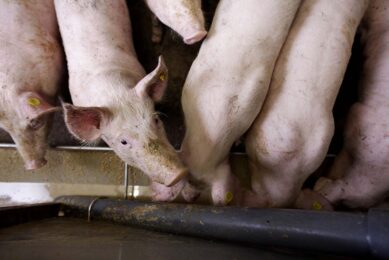





 WP Admin
WP Admin  Bewerk bericht
Bewerk bericht